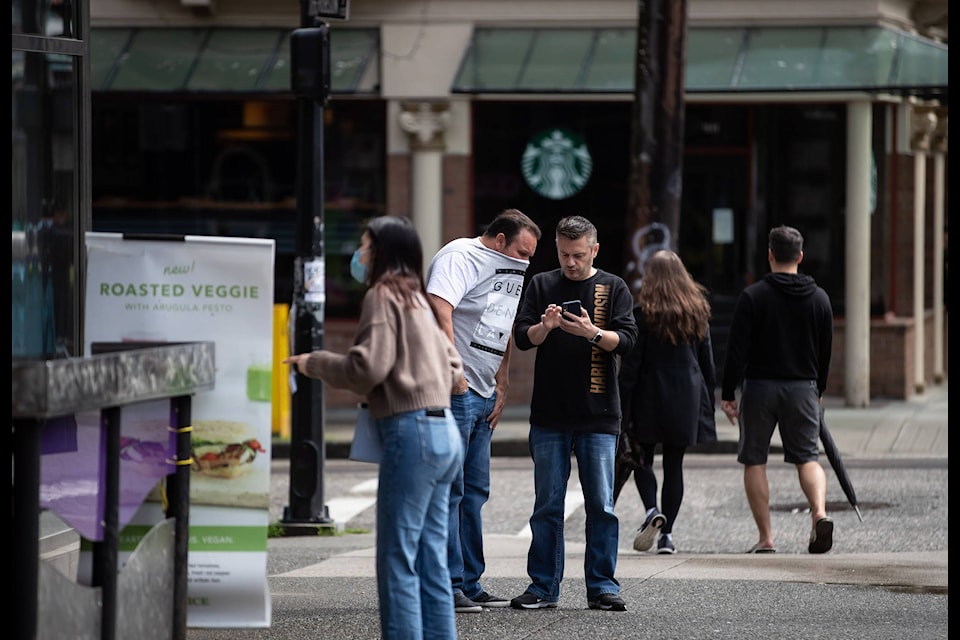As British Columbians look ahead to summer with the hope that health officials will feel comfortable lifting more social contact restrictions, health officials will be keeping a close eye on COVID-19 and the virus’s inevitable resurgence.
Dubbed “the second wave,” a return or resurgence of a virus as contagious as the novel coronavirus is imminent, health officials around the world have warned, based on other historic pandemics, such as severe acute respiratory syndrome – or SARS – in 2002, or the H2N2 pandemic in 1957, as well as the H1N1 influenza in 2009.
The deadly 1918 influenza, also known as the Spanish flu, returned in three separate waves in some countries – through spring, summer and fall – according to the U.S. Centers for Disease Control and Prevention.
Here in B.C., provincial health officer Dr. Bonnie Henry has motioned that British Columbians should prepare that this could be the case with COVID-19, a respiratory-based virus that currently has no vaccine or cure.
ALSO READ: Gaining herd immunity through COVID-19 transmissions ‘ineffective’
During a news conference on Tuesday (May 21), Henry pointed to the ongoing situation in South Korea, where one person inadvertently went to a number of nightclubs while unknowingly infected and spread it to a couple hundred people. She explained that B.C.’s “careful and cautious” reopening plan has been curated with avoiding such a spread at top of mind.
“If we look at the modelling of what we’ve seen in other places and here in B.C. there is a potential for it to start transmitting quite rapidly,” Henry said.
“We’ve seen that in other places where you get rapid increases in numbers [and] people getting infected in short periods of time.”
But as much as health officials work to flatten the curve, relying on the adherence of British Columbians, there is seasonality to respiratory viruses that may not be avoidable due to climatic conditions – in other words, the return of colder weather – starting in the fall.
“We know that influenza fades away in March, usually or sometimes April here in the northern hemisphere… but we know it comes back in the following fall,” Henry explained. “And we know that has been the pattern we’ve seen with other coronaviruses, so chances are we are going to see that with this coronavirus, as well.”
ALSO READ: Testing wastewater could give early warning of second wave of COVID-19
In the past 17 weeks, since the virus touched down in B.C., the province has morphed its testing strategy from focusing solely on outbreaks and those most vulnerable to seeing serious health impacts of the virus to opening up testing to anyone who shows symptoms in line with the disease.
Moving into the summer, contact tracing will play a big role in keeping case counts low – and health authorities have ramped up their staffing to assist. Henry confirmed that “several hundreds” of people are currently working on these teams in B.C.
ALSO READ: Do you think you have COVID-19? Here is what to do next
When someone tests positive for COVID-19, health-care personnel will work with the individual to recall anyone or place they’ve had contact with in the previous days when they may have been unknowingly infectious, also called the incubation period. Then, those staff reach out to as many people who could have contracted the virus to make them aware and watch for symptoms.
Contact tracing is a process used around the world and what gives public health departments “that fighting chance” to stop the chains of transmission, Henry said.
In the meantime, the efforts made now to keep transmission low could make all the difference in how widespread the potential second wave will be, Henry said.
“I think it is important for us to maintain the lid on the numbers of cases that we are seeing through the summer so that we are not starting off with a lot of spread in our community… but also to have the testing, the contact tracing, and all of those things that we know are important to have in place come the fall so we are able to manage this without overwhelming our healthcare system.”
@ashwadhwani
ashley.wadhwani@bpdigital.ca
Like us on Facebook and follow us on Twitter.
Want to support local journalism during the pandemic? Make a donation here.
